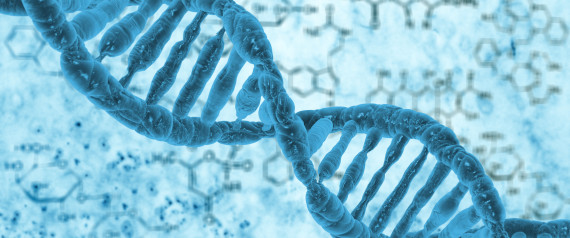DNA May Be the Hard Drive of the Future
Aug 25, 2015

Last week, a story appeared that seemed to come out of the pages of a science fiction novel. A team of researchers in Switzerland developed a new way to store digital data. Instead of hard drives, chips, or crystals, they used the genetic material found in all living organisms, DNA. On top of that, they were able to show the information could last for at least 2,000 years.
The premise may seem strange at first but actually makes sense. DNA is one of the strongest molecules in existence and has been known to survive thousands of years. This longevity is part of the reason for the existence of paleomicrobiology, the study of ancient microbes. Researchers have been examining the DNA of microbes, like Mycobacterium tuberculosis to identify how the bacterium has evolved through time.
But one of the problems with DNA is that it does degrade over time and its code can be lost. It's one of the reasons why researchers can study ancient microbes but not work with them in real time. But that all changed in 2013, when a European group actually revived a virus after being dormant in the Siberian ground for 30,000 years. This revelation alone shows DNA not only has the ability to survive but also maintain its code if kept in the right conditions.
For digital archivists, this microbiological achievement presents a windfall of opportunity. Instead of making a hard drive that lasts for years, perhaps decades, they have the option of saving data for centuries. The only hurdle is to figure out how to save digital information, stored in a collection of 0s and 1s, in molecular format, traditionally known as A, C, T, and G. Thankfully for them, this has already been figured out.
Ten years ago, researchers began to look at DNA not simply as a code for biological purposes, but also for encrypted communication. The purpose was to figure out how to send information using a chip of encoded DNA. The practice gained momentum and eventually standards were developed. By following the proper cypher, the organic code could be turned into a readable message.
With longevity and also coding procedures in place, all that's needed is a way to store the DNA so it can be kept away from the environment. A number of options have been tried including freeze-drying, incorporation in paper, and infusion into a biopolymer resembling a seed. None of these are entirely effective. But one method has seemingly worked to perfection and is quite well known to those in the storage business: silica.
This substance, which is the basis for sand and glass, can protect organic material for long periods of time. Once the DNA is included within this structure, it is protected from any environmental stressors and can continue to maintain its structure and code. The silica also can be shaped into a variety of forms for use in almost any computer environment. The combined DNA and silica matrix could then be used universally with the right piece of decoding equipment.
The best part might be the incredibly small amount of space needed to keep the DNA. Because it works at the molecular level, the need for large chips would be unnecessary. A single terabyte of information could be stored in less than a hundredth of a milligram of DNA. Compare that to today's current hard drives in the context of physical space minimization and the potential becomes clear. Essentially, the entirety of some archives could potentially be stored in a sphere no larger than a few grains of sand.
There are still some obstacles requiring more research. The most important is the inability to actually write code without large-scale machinery. At the moment, the technology only allows for devices to read the information contained in the small spheres. Yet, this too may already be resolved. The trick is to use live cells instead of DNA alone.
Incorporating data into a living organism, which continually modifies its genetic code, can allow for writing and re-writing of digital code. The way to accomplish this is to make DNA mutate itself on purpose. This could be done by enzymes programmed to react to certain digital signals. Or, mutation may be done using the concept of bacteriophages. In the same way as computer viruses alter the code of programs these viruses of bacteria can be used to alter the genetic code, effectively rewriting it. Essentially, when a person is ready to save, a virus is created and then used to infect the organism such that it changes the data.
Of course, all of this potential has yet to be transformed into consumer products. It'll still be at least five years before we see any movement towards silica-DNA storage reading devices and at least another five before writable living media becomes available. But, we can be sure when the information does become available we'll be able to preserve our digital files for thousands of years and possibly show future generations all those selfies we're taking now.
Source: The Huffington Post